Year in Review: 2023
Summary: A copy of my end-of-year message to my lab and lab alumni, where I review the key events from 2023.
What an interesting and eventful year 2023 has been! You have all been such an important and fulfilling part of what we have done this year and have been the key drivers for the exciting things that are to come next year. While it seems like every year keeps going by faster and faster, due to both personal and professional changes mentioned below, I wanted to take some time to thank you all and reflect on what we have done this year. Working with you all is the highlight of most of my days that keeps this job interesting and fulfilling for me. There has been quite a bit going on since last year’s review and I hope to summarize and celebrate your achievements below, and thanks again for all of your efforts this past year!
The People
I enjoyed being able to get back into doing many more in-person events and meetups this year, which included three in-person lab retreats! Our January retreat during the cold winter months covered Career Planning and Time Management, followed by a board gaming session at Board and Brew (see group photo below!) and discussions from there led to the creation of our spring virtual invited speaker series on various industrial, academic, and government post-Ph.D. career paths. It was great to hear from so many guests, including various lab alumni (thank you Ceena, Dan, and David, plus all of our other non-alumni speakers). In May we had the chance to go kayaking on the Anacostia Rivier at Bladensburg waterfront park and have discussions around Oral Communication practices and lab norms and expectations. Finally, in October we got together to go hiking the perimeter trail of Greenbelt National Park and talked about how to construct research plans and proposals for different agencies. While we can do a lot of what we do remotely, it is still nice once in a while to get together as a group, get out of our usual scene, and experience something fun together.
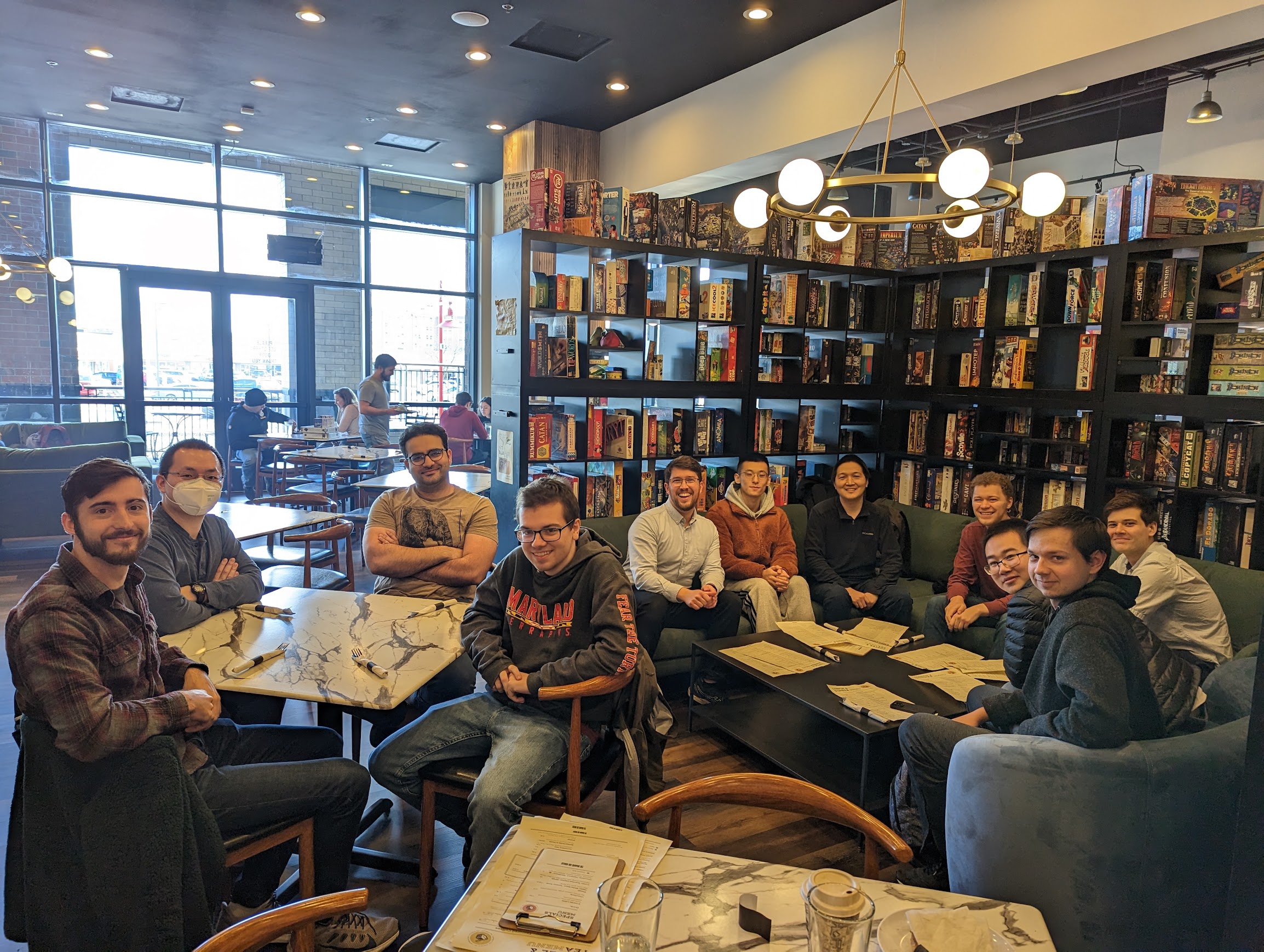
For lab additions, we were joined this year by Ph.D. student Cashen Diniz who is building upon our Inverse Design work in the aerospace domain and brings together a wealth of knowledge on aerodynamics and meshing, which has been helpful as we refine and improve our MIDBench library. Cashen was also awarded the Clark Graduate Student Fellowship, which is a competitive college-wide fellowship, and is the second member of the lab to secure this fellowship (Nathan was awarded one last year). We were also joined by Xavier Francois, who is a High School research intern from nearby Elenor Roosevelt High School, and who will be working on his senior research practicum with us throughout the ‘23-‘24 academic year.
As is the natural ebb and flow of a research lab, we also had several happy graduations or departures this past calendar year. In Spring, M.S. students Eesh Kamrah (Thesis title: “Effects of Diverse Initialization on Bayesian Optimizers”) and Alec Vanslooten (Thesis title: “Ordering Non-Linear Subspaces for Airfoil Design and Optimization via Rotational Augmented Gradients”) graduated (see pictures below). Eesh headed back to India to support his family there and Alec has started at GE Research up in Niskayuna, NY. Lastly, Dr. Xuan Liang, a Post-Doctoral Associate working with Ryan Sochol and me on our joint NIH project, is leaving the group in the coming days to begin his new faculty position as an Assistant Professor in the Mechanical Engineering Department at Nanyang Technological University in Singapore! We had a fun farewell lunch for Xuan at the end of the fall semester with my lab and members of Ryan’s Bioinspired Additive Manufacturing (BAM) lab, and we are looking forward to our continued collaboration in the new year on some ongoing papers we are working on together from his time here.

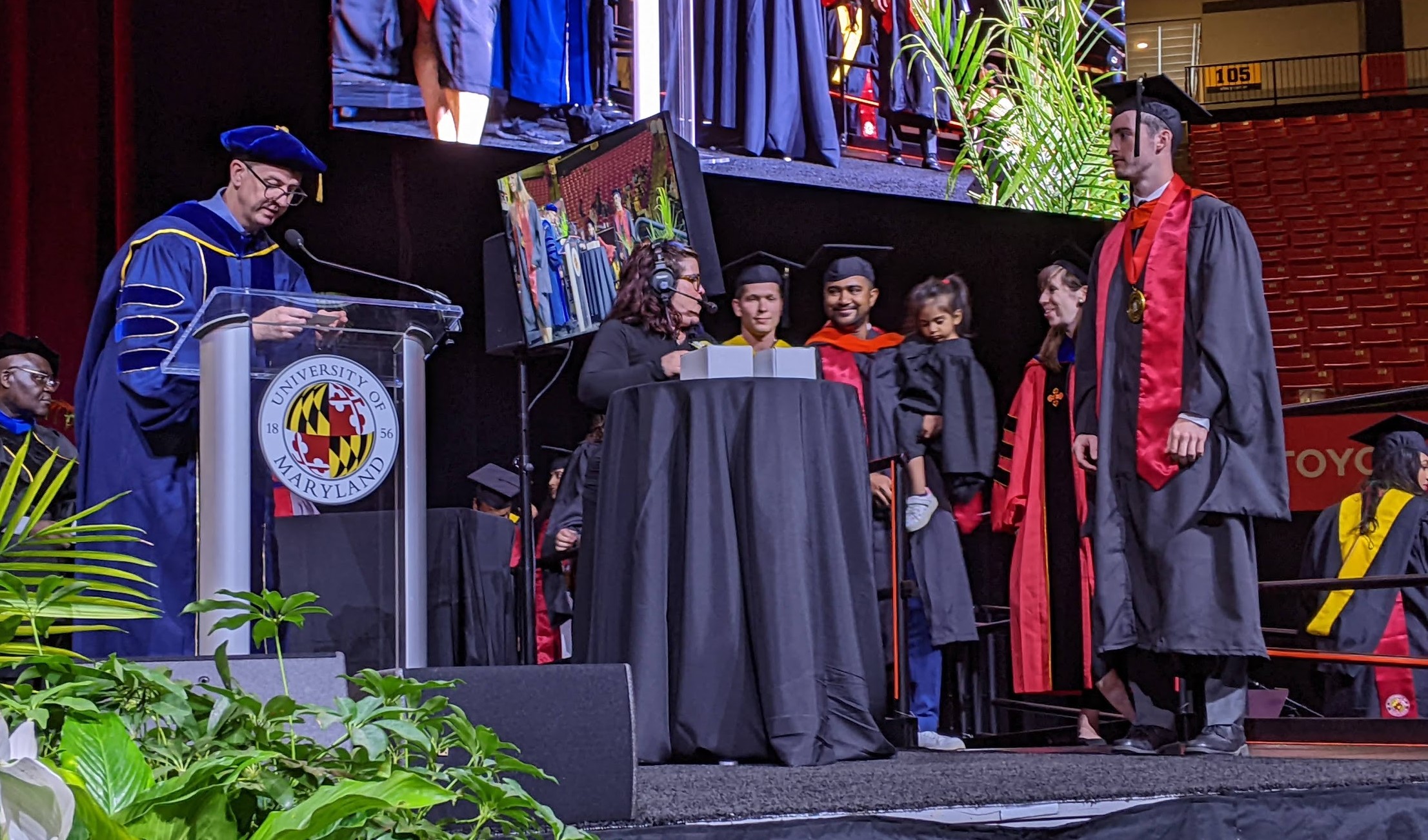
We also had several current lab members win various awards, such as the already mentioned Clark Fellowships for Nathan and Cashen, and Sangeeth Balakrishnan (whom I co-advise with Dr. Peter Chung), won this year’s Outstanding Graduate Assistant award.
The Science
Now that some of our major ARPA-E projects have wound down at the beginning of the year, we have been working on writing up and publishing results from those efforts, as well as renewing our efforts on my NSF CAREER project and various NIH projects, some of which moved toward hospital integration and experiments, which is always exciting. As always, you can get a list of recent papers by checking out our website’s papers page or the automatically updated Google Scholar, but I’ll highlight a few key threads here:
- One major paper that we were excited about this year was the publishing of Eesh’s M.S. work “How Diverse Initial Samples Help and Hurt Bayesian Optimizers” in JMD 145(11). This is a paper we worked on with former Post-Doc (now faculty member) Fatemeh Ghoreishi as well as our collaborators in UMD’s iSchool – Co-PI Joel Chan and his student Jason Ding. This paper was several years in the making, in part because it overturns a common practice and assumption within the Bayesian Optimization community; specifically, we show that under certain cases using diverse initial samples (such as those you might get from Latin Hypercube Sampling or other Space-Filling experiment designs) can actually harm BO convergence! This was a completely unexpected result for us, as I was expecting to find that diverse sampling always helps BO (or at least that is what I was taught when I was a student and is how I have seen papers and industrial partners implement BO). However, it turns out that non-diverse samples can help BO much more rapidly converge to the correct Kernel, which then accelerates later optimization. This paper made me feel the most like a scientist in the sense that we observed a curious phenomenon and had to spend lots of time carefully controlling or locking down various confounding factors until we could isolate the causal effect, and the result was surprising given current theory and practice. I think it is unfortunately unlikely that this paper will end up being one of our most cited articles in the long term, mostly because it is not dealing with anything flashy or in vogue at the moment, but I am quite proud of what my co-authors did on this paper and think it is important given how widespread BO use is not only in Engineering but in ML and various other scientific fields as well.
- We also continued various lines of work in the Inverse Design and Generative Model space this year. One of these was Qiuyi’s work on “Characterizing Designs Via Isometric Embeddings: Applications to Airfoil Inverse Design” in JMD 146(5) which was part of the “Selected papers from IDETC 2023” JMD special issue. I particularly liked this paper because it explored how to enforce isometric constraints on Neural architectures such as Autoencoders, which is an important property to have if you want to use the learned latent space for, say, clustering or another task where capturing isometry in the original design space correctly matters. More exciting, this paper is the first of a few we are working on as part of Qiuyi’s thesis on demonstrating connections between topology, design, and deep learning, so I’m excited to share more about some cool follow-up papers in future years. Another work addressing Inverse Design, though from a different direction, is Ph.D. student Milad Habibi’s IDETC ‘23 paper “When Is it Actually Worth Learning Inverse Design?”. This paper addresses perhaps the number one question I get from industrial partners when I tell them about ML-based Inverse Design, which is “How much data do I actually need to see any benefit and what is the return on investment?” To that end, Milad looked carefully at this “when is it worth it” question as part of his paper and established a variety of metrics and costs that might influence that answer. His paper shows how to answer that question with a simple example, and we are extending this to other examples for the journal paper. (Faez snapped a picture of Milad presenting the paper at this year’s IDETC ‘23 – see below.) Lastly, we have two papers that were accepted to AIAA SciTech which starts in less than two weeks: one by former Post-Doc (now faculty member) Dr. Jun Wang on how to use Active Learning to reduce the number of samples one needs to learn a performant conditional generative model in an aerospace application, and the second by new lab member Cashen Diniz on optimizing conditional diffusion models in shape optimization tasks using information from prior adjoint runs.
- For our creativity-related work, M.S. student Matthew Keeler published a paper at IDETC ‘23 on using active learning and a new convergence metric for knowing when one is “done” gathering triplets to construct GNMDS embeddings, and we are working on the journal extension for this. This is part of a larger effort to extend some of the work we have done on creativity measurement (reaching back all the way to Faez’s dissertation work, plus other things that came after) to deploy those algorithms as part of an assessment platform (being built by Penn State) that could influence K-12 and Higher Education in the future through an NSF-DUE project with Lead-PI Roger Beaty at Penn State (and includes Co-PI and past creativity co-conspirator Scarlett Miller).
- Lastly, Nathan went up to Brigham and Women’s Hospital in Boston in the Fall to help out Lead-PI Junichi Tokuda and our Johns Hopkins collaborators Axel Krieger and Lidia Al-Zogbi on a prototype integration of the robotic needle guidance robot the team is building in support of our NIH project. While we are still working on publications related to this that we cannot talk about yet, it is nevertheless exciting to see the BWH-JHU-UMD team come together to try to take some of our actual needle models and put them into practice on the robot!
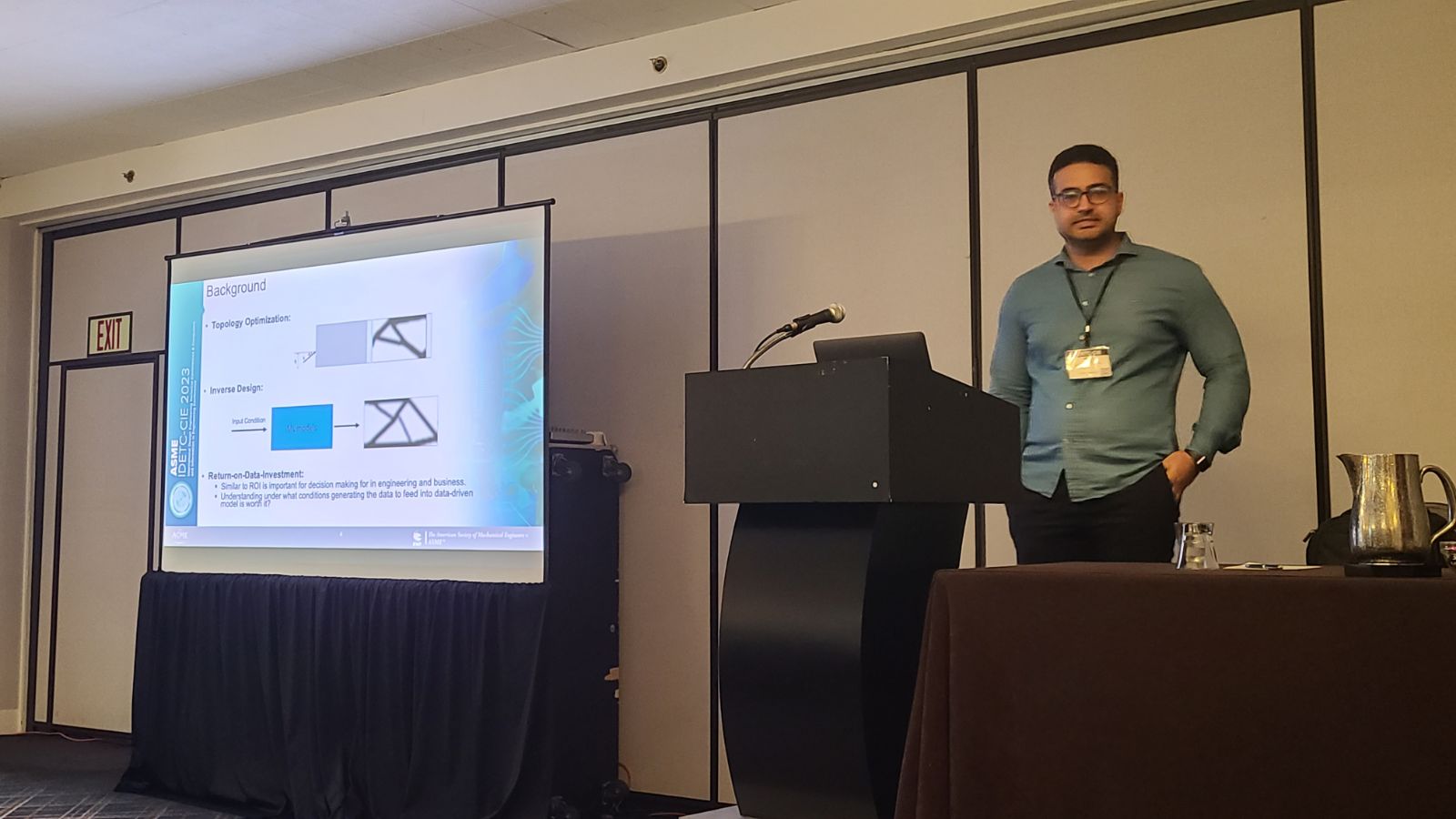
On the education side, we had two notable events this year:
- We hosted the second Frontiers in Design Representation (FinDeR) Summer School. This built on the structure of last year, which covered “Optimal Transport, Information Geometry, and Generative Models,” but this year we moved to a new topic of “Designs as Programs: Induction, Analysis, and Generation.” As with the first Summer School, this event was one of the highlights of my year! In particular, I loved interacting with the students who attended and learning about their work at the poster session. I also want to thank and highlight some of the excellent invited speakers who spoke at the summer school this year including Dr. Evan Pu, Dr. Matt Campbell, Dr. Susmit Jha, Dr. Conrad Bock, Dr. Raphael Barbau, Dr. Leonidas Lampropoulos, and Dr. Alejandro Salado. I’m also indebted to those of you in my lab who helped out with both the logistics and the additions to the FinDeR whitepaper. Keep a lookout for the third Summer School in June 2024 which I should hopefully be able to provide more details about in a few weeks.
- I represented UMD’s Mechanical Engineering department and the Maryland Robotics Center at an annual career day for elementary and middle school students are Robert Goddard Montessori School. In the photo below you can see various mechanical or robotic systems that students got to play with or observe, including Hugh Bruck’s and SK Gupta’s “RoboRaven”, a walking hexapod robot, and a variety of mechanisms including kinematic chains and the inside of an electric egg beater.
See below for some photos! (1) a group photo at FinDeR we took on the last day right before the final presentations; (2) a reunion photo some of the FinDeR students took at IDETC ‘23; and (3) a picture of the MRC demos at the Robert Goddard Montessori School:
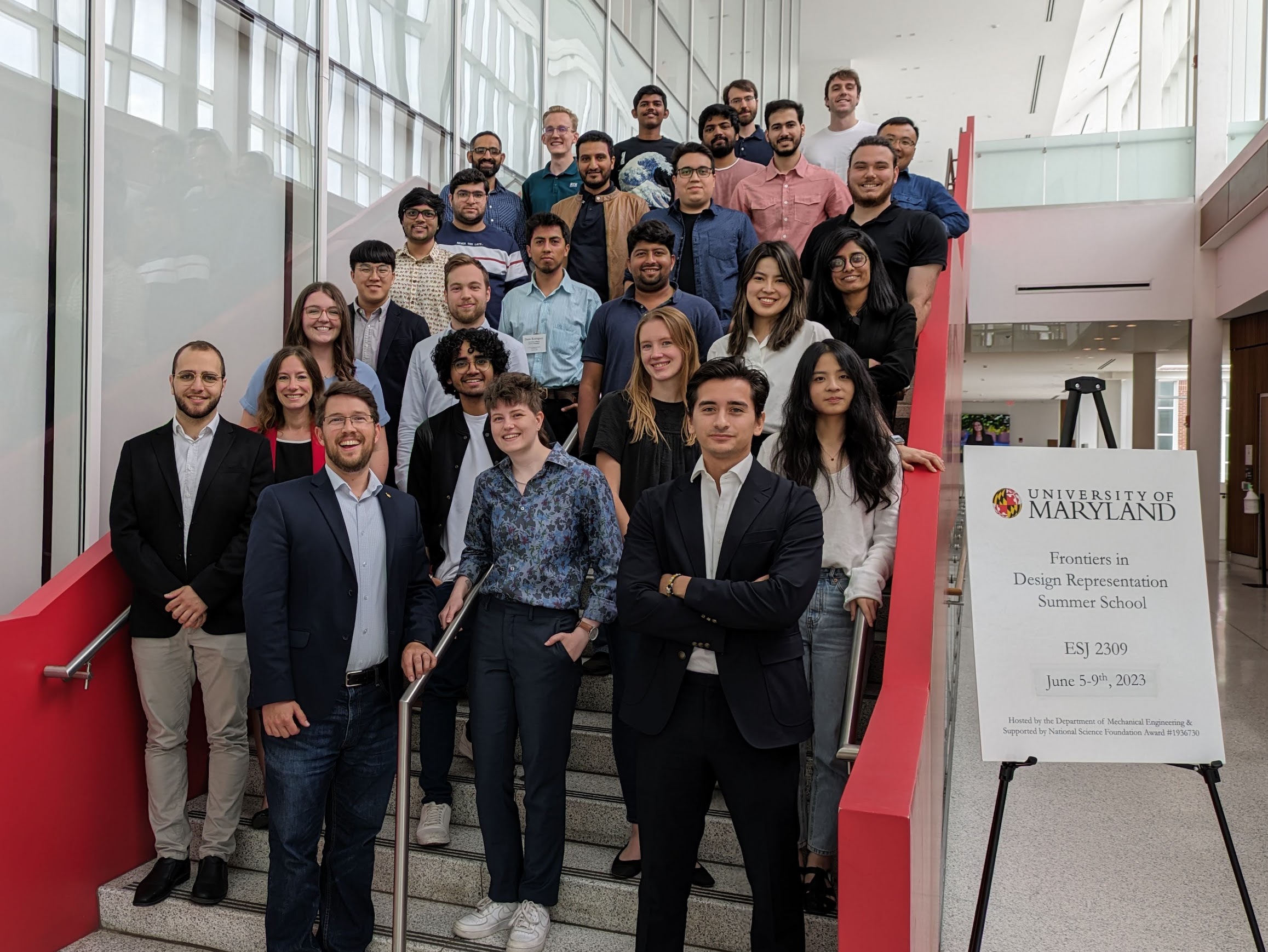
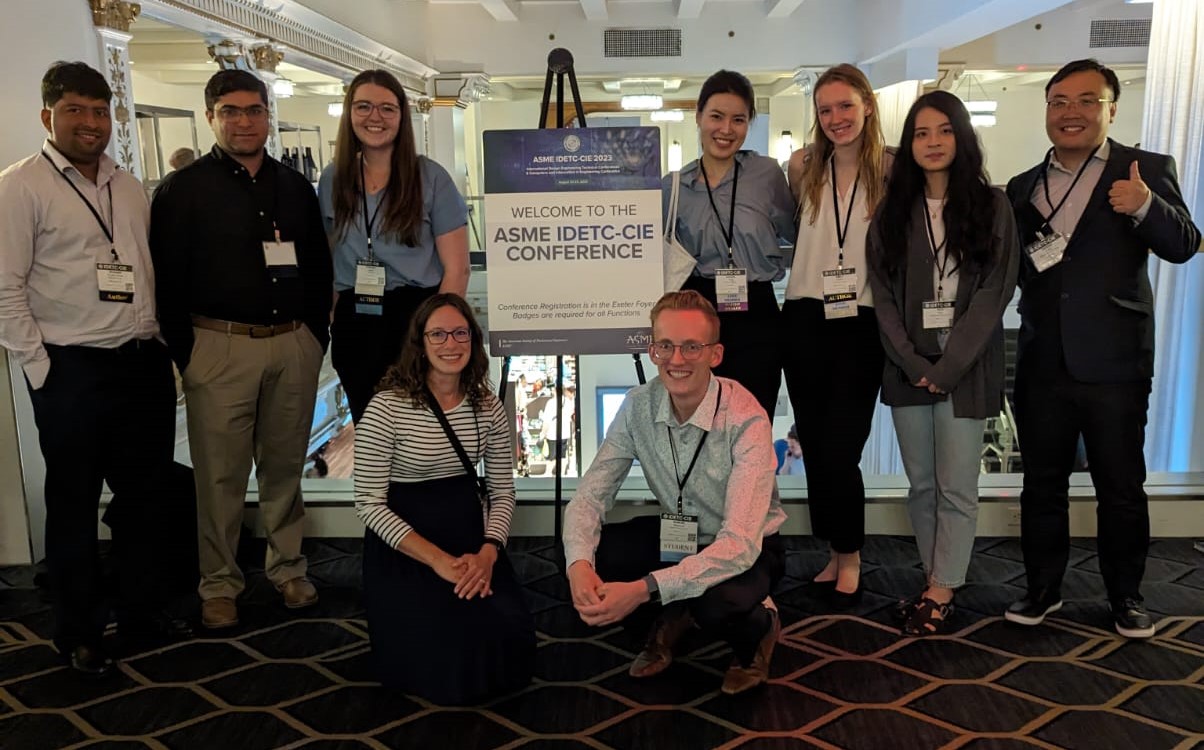
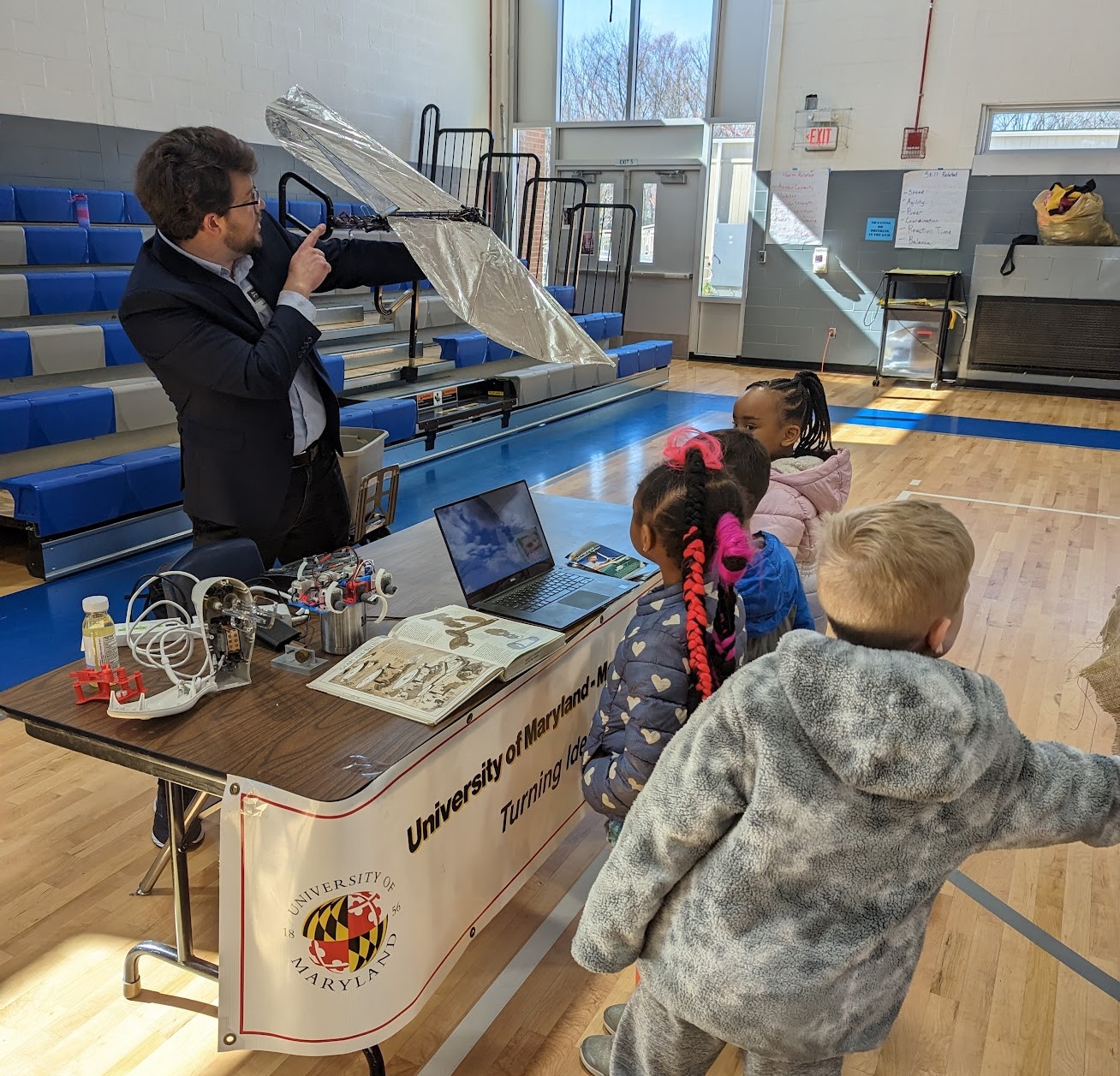
The Field
As one might expect, there continues to be increasing interest at the intersection of ML and Engineering Design, with a variety of special issues and conference sessions appearing at that intersection. In particular, there is increasing interest from the core ML and AI communities in the intersection, as evidenced by a small but increasing number of publications and workshops at venues like ICML, NeurIPS, ICLR, AAAI, and others at the intersection of ML and Physics or Engineering. Some of this is growth from areas that have been of interest to the ML folks for some time (like in Protein and Molecular design), but increasingly papers are also addressing more traditionally “mechanical” areas, such as structural or shape optimization. I view this as a good sign, in general. Part of this has been coupled with a general increase in the “Physics-Informed” ML community, which studies questions of complementary interests to us in Design. For example, our collaborators at Raytheon Technologies Research Center (primarily organized by friend and star Soumalya Sarkar) put together a great virtual “Physics-Informed Machine Learning” workshop in the Fall that discussed several relevant industrial and design issues. Also, the National Academics for Science, Engineering, and Medicine organized a workshop I attended on “AI for Scientific Discovery” some of which, while broader than this, also covered related work in engineering and design.
More excitedly, within the Engineering community, I have started to see much stronger work come out addressing more fundamental or original issues in applying ML to the Design community. For example, researchers are looking at applying newer techniques from other areas of mathematical such as topology to solve some problems in Topology Optimization (e.g., in studying persistent homology in Generative models like in the GANTL paper), and there has been an increase in the use and study of learned implicit function representations (e.g., of the type introduced in the TOuNN Paper). It is nice to see folks in the community pushing the metaphorical boat out a little bit instead of the typical “I found this cool ML model that works for images; let me just apply it out of the box to these images of TO!” that I felt typified the past five years or so. (And, to be fair, a number of our works took a similar path as this, which is fine as we begin to build up fluency in various techniques for new students, but it is also nice to push past this to more intellectually interesting grounds.) Beyond just new techniques, it is also refreshing to see folks taking a more scientific interest in understanding why things work, rather than just trying out different things. A good example of this recently has been some of the work by Burak Kara’s group at CMU on understanding why and how initializing conditional generative models with different field effects improves the conditional generation of Inverse Design for Topology Optimization. This was discussed in the ASME JMD webinar #10 on Topology Optimization and has also been explored by recent papers to understand exactly what types of fields improve conditional generation, why, and what practical effects this has on things like sample efficiency. It is nice to see folks being a bit more introspective and scientific here rather than just trying a bunch of things and seeing what sticks since I find I learn far more from those deeper papers.
As with the last few years, we saw continued academic and industrial interest in hiring folks at the intersection of “ML + Design or Manufacturing” with many openings. It remains a great time to be on the lookout for those types of positions if you want that career path. As always, if you hear of any up-and-coming researchers that you think I should add to my reading lists, let me know since I’d like to support and keep abreast of the best work in this growing area.
Alumni News
Occasionally, I’ll get some updates from past lab alumni that I like to share with the lab family each year.
Wei started his Assistant Professor position at Texas A&M university during the Fall of this year, spending some time getting his lab set up and teaching the senior design class; a big milestone and change of pace for him to be sure! Xiaolong also started his Assistant Professor position this Fall at Texas Tech University and is getting his lab set up as well. Faez hosted a particularly popular workshop at IDETC 2023 this year in Boston titled “From Data to Design: Challenges and Opportunities across Industry and Academia” – I believe it was the most popular workshop at the conference with close to (or over) 100 attendees if I remember correctly! He came by to visit UMD on an impromptu trip and the lab got to learn more about what he was up to (see below picture). I got the chance to see Charlie when he came to this past NSF Summer School and learn more about his current interests there in the Smart Connected Manufacturing Systems Group at NIST. The lab got the opportunity to hear from Dan Elton at our career paths series, where he talked about his current job as a Data Scientist in Mass General Brigham Women’s Hospital’s Data Science Office and some of the excellent work-life balance that it can help him achieve. Ceena also stopped by for our career paths series to discuss his roles at startups of various sizes and give us an update on his life in NYC. David is doing well up in Boston and also spoke to the lab about founding startups in the Engineering Design space; Fatemeh, Jun, and David were even able to meet up with folks at IDETC 2023 for a mini IDEAL Lab reunion even though I could not be at IDETC this year myself (see below picture). Former undergrad Shai continues his Ph.D. work at Stanford as part of the Mayalu Lab looking into the intersection of Dynamics, Control, Biological Systems, and Machine Learning.
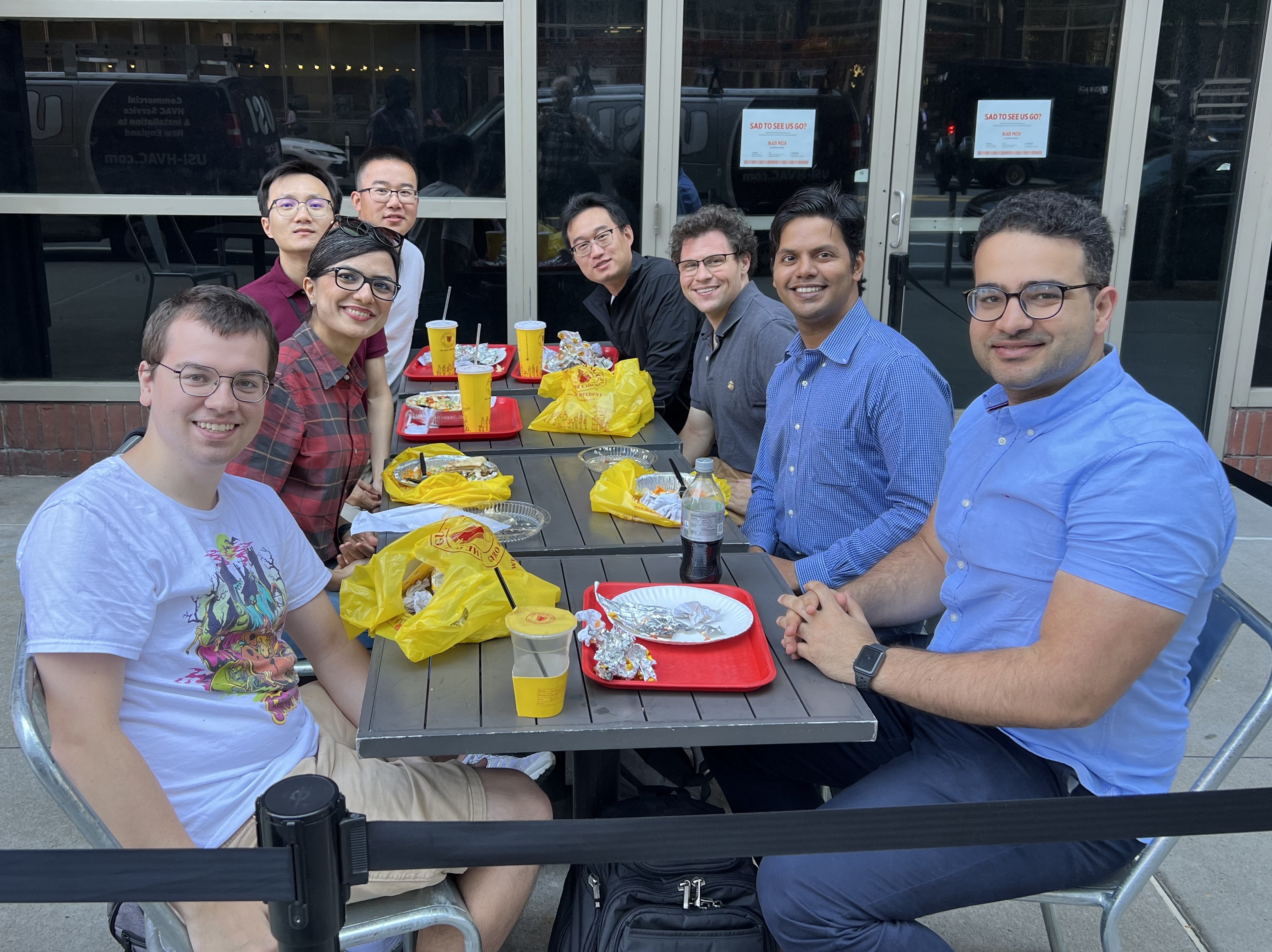
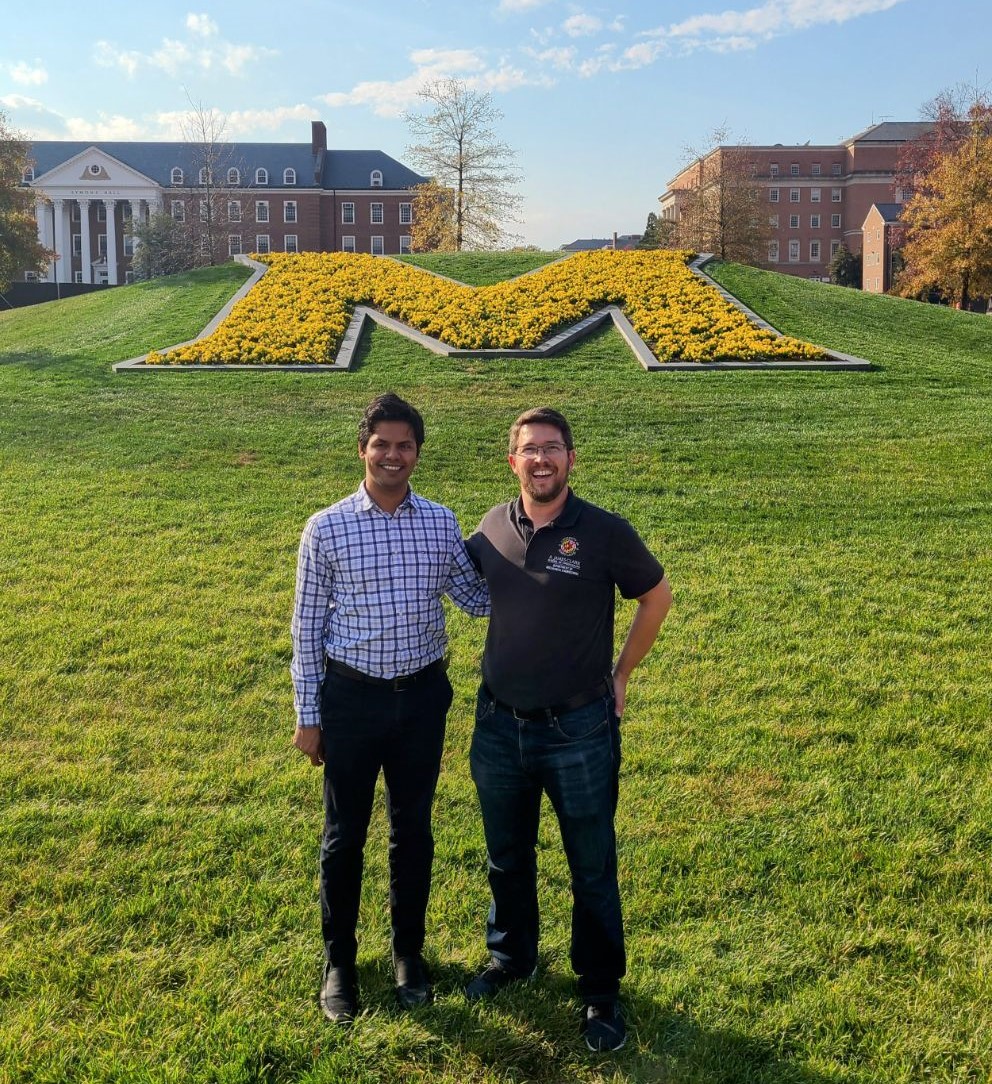
I am sure that there are many other updates that I might have missed from lab alumni here, so my apologies if I forgot anything and I do appreciate it when you reach out to me to let me know about how things are going! Also, just as an advanced “save the date”, I think we are going to try to organize an IDEAL Lab 10-year reunion during IDETC 2024 in Washington DC, most likely an evening party on Tuesday, August 27th downtown near the conference. More details are to come via the lab listservs.
Big Changes and Looking Forward
Of course, I left the two major 2023 updates for last.
First, as all of you know by now, my third child and daughter was born in August. This has been a great thing for my family and something we have been looking forward to for some time. Obviously, it also had some impacts on you all in the lab, in the sense that any arrival of a family member is disruptive to my time and routines and made scheduling things more difficult, and myself a bit more sleep-deprived and time-crunched than usual (for good reason). Compounded onto this was that I also went on Paternity Leave to care for the baby, which further impacted my ability to spend time on my “academic children” as the saying goes, in favor of my actual children. I appreciated all of your patience during this trying time and dealing with my wrangling the baby on Zoom calls or having to pause for a few minutes while I changed a diaper or put her down for a nap. It also prevented me from attending all of your talks at IDETC or other conferences that conflicted with the birth or leave, but I (and my entire family) thank you all for being so understanding as I balanced my work and life while also trying to take care of you all as best as I could under the circumstances. This is challenging to do, to be honest, and I’ll admit it can be hard on me at times to come to terms with not moving full speed ahead on everything especially when we are trying to push so many interesting endeavors forward. But, at the same time as we have often discussed in lab meetings or our IDP meetings, one needs to take the time to care for oneself and one’s family, and, as a line in one of my eldest son’s current favorite songs goes: “I’m learning how to eat the fruit that is in season.” Thank you all again for your patience and understanding!
Second, as those currently in the lab know, though perhaps not some of our alumni yet, I will be leaving UMD in July 2024 to move to ETH Zürich as a Full Professor and Chair of Artificial Intelligence in Engineering Design. You can read a bit more about it in the press release. This was a difficult decision, as I have quite enjoyed being at UMD and in the ME department in particular. I will be most sorry to not see some of my colleagues (many of whom have become close friends) as often going forward as I do now. This said, there are some really exciting opportunities for my family and the lab in Switzerland that everyone is excited to explore going forward. So there will be some big changes to the lab in over the next year or two as we work through the transition, but I hope it will create complementary benefits for all of you and enable a bright future for all of you and our alumni in the years to come.
Thanks again to everyone for your hard work this year and I’m certain we will have some exciting things to work on and report in 2024!